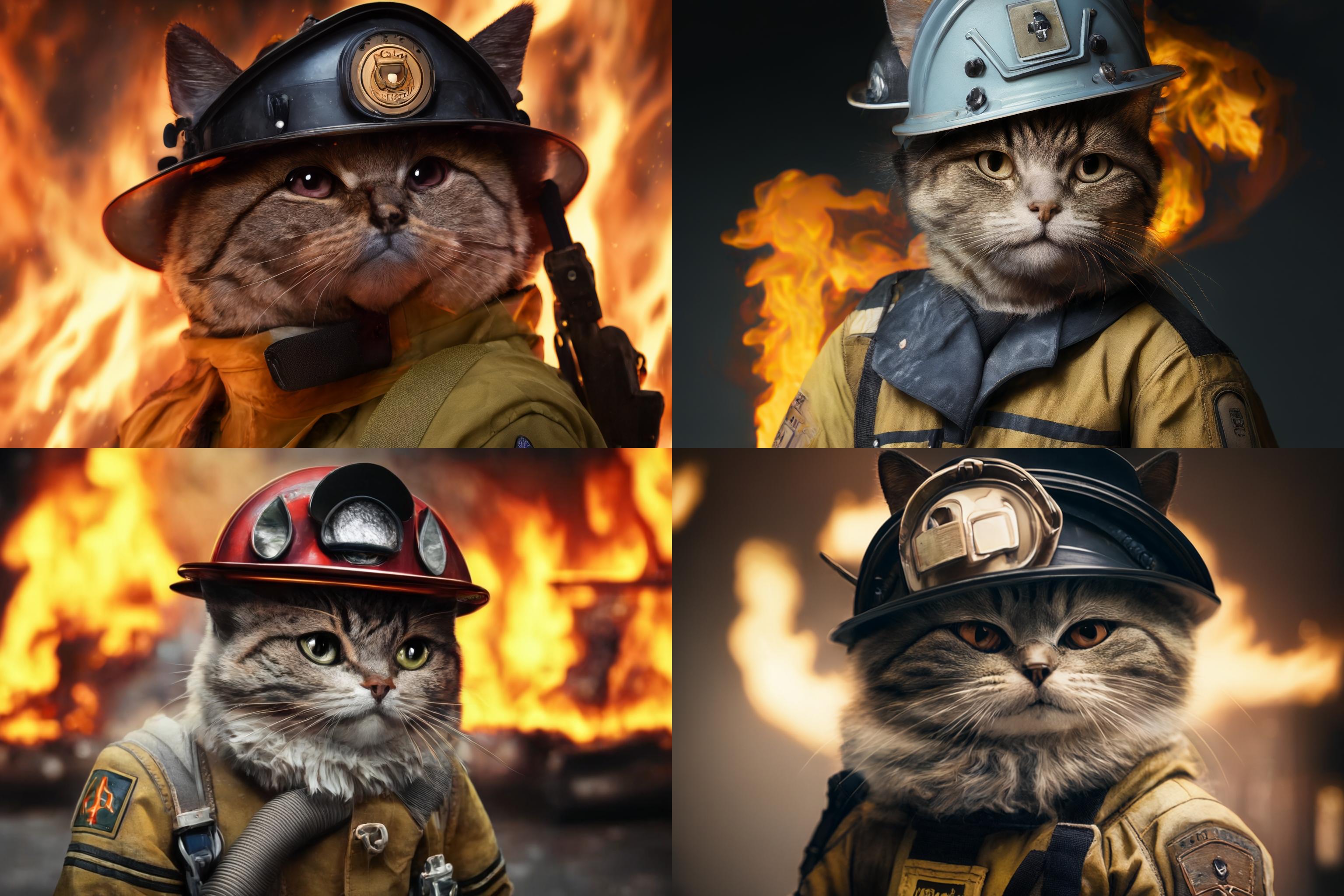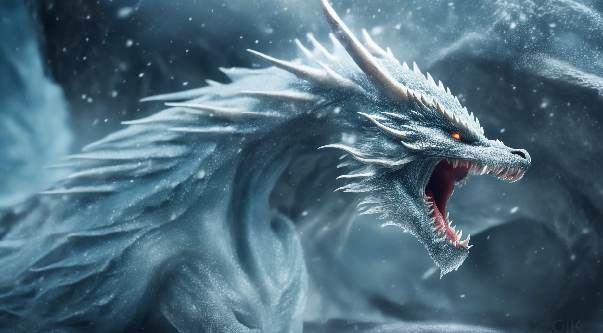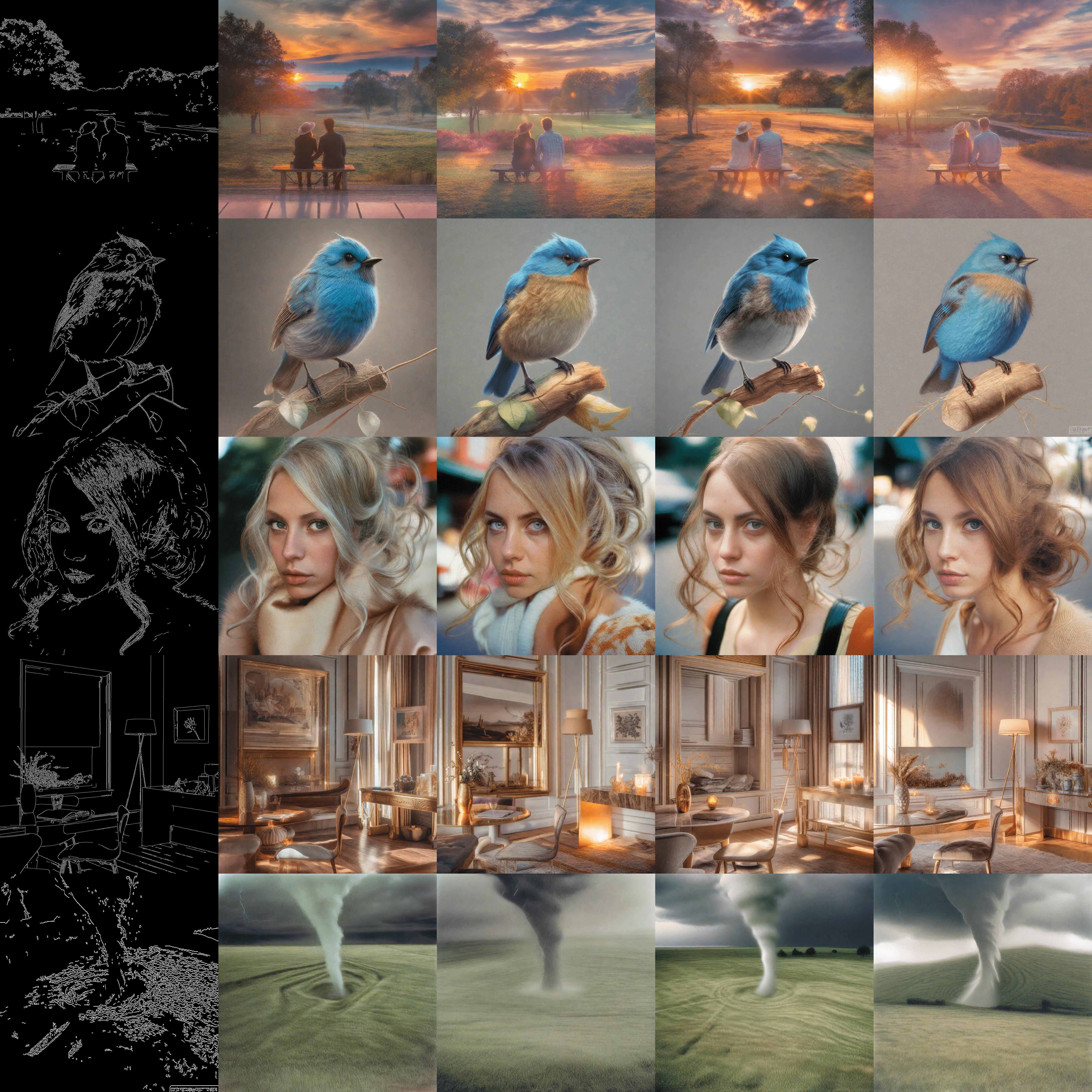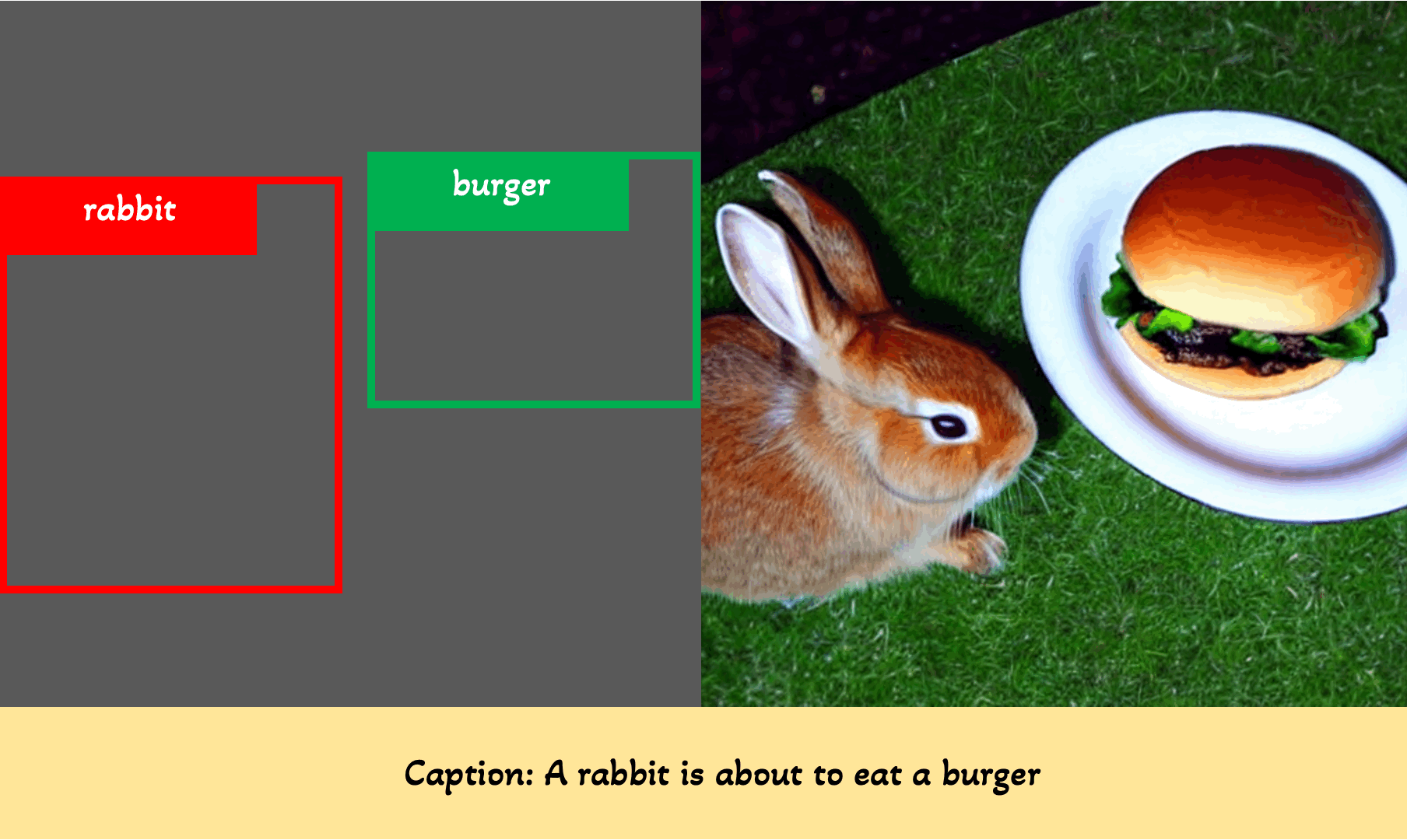Releases: huggingface/diffusers
Patch Release: Fix Lora fusing/unfusing
- [Lora] fix lora fuse unfuse in #5003 by @patrickvonplaten
Patch Release: Fix LoRA attention processor for xformers.
- [LoRA, Xformers] Fix xformers lora by @patrickvonplaten in #5201
Patch Release: CPU offloading + Lora load/Text inv load & Multi Adapter
- [Textual inversion] Refactor textual inversion to make it cleaner by @patrickvonplaten in #5076
- t2i Adapter community member fix by @williamberman in #5090
- remove unused adapter weights in constructor by @williamberman in #5088
- [LoRA] don't break offloading for incompatible lora ckpts. by @sayakpaul in #5085
Patch Release v0.21.1: Fix import and config loading for `from_single_file`
- Fix model offload bug when key isn't present by @DN6 in #5030
- [Import] Don't force transformers to be installed by @patrickvonplaten in #5035
- allow loading of sd models from safetensors without online lookups using local config files by @vladmandic in #5019
- [Import] Add missing settings / Correct some dummy imports by @patrickvonplaten in #5036
v0.21.0: Würstchen, Faster LoRA loading, Faster imports, T2I Adapters for SDXL, and more
Würstchen
Würstchen is a diffusion model, whose text-conditional model works in a highly compressed latent space of images, allowing cheaper and faster inference.
Here is how to use the Würstchen as a pipeline:
import torch
from diffusers import AutoPipelineForText2Image
from diffusers.pipelines.wuerstchen import DEFAULT_STAGE_C_TIMESTEPS
pipeline = AutoPipelineForText2Image.from_pretrained("warp-ai/wuerstchen", torch_dtype=torch.float16).to("cuda")
caption = "Anthropomorphic cat dressed as a firefighter"
images = pipeline(
caption,
height=1024,
width=1536,
prior_timesteps=DEFAULT_STAGE_C_TIMESTEPS,
prior_guidance_scale=4.0,
num_images_per_prompt=4,
).imagesTo learn more about the pipeline, check out the official documentation.
This pipeline was contributed by one of the authors of Würstchen, @dome272, with help from @kashif and @patrickvonplaten.
👉 Try out the model here: https://huggingface.co/spaces/warp-ai/Wuerstchen
T2I Adapters for Stable Diffusion XL (SDXL)
T2I-Adapter is an efficient plug-and-play model that provides extra guidance to pre-trained text-to-image models while freezing the original large text-to-image models.
In collaboration with the Tencent ARC researchers, we trained T2I Adapters on various conditions: sketch, canny, lineart, depth, and openpose.
Below is an how to use the StableDiffusionXLAdapterPipeline.
First ensure, the controlnet_aux is installed:
pip install -U controlnet_aux==0.0.7Then we can initialize the pipeline:
import torch
from controlnet_aux.lineart import LineartDetector
from diffusers import (AutoencoderKL, EulerAncestralDiscreteScheduler,
StableDiffusionXLAdapterPipeline, T2IAdapter)
from diffusers.utils import load_image, make_image_grid
# load adapter
adapter = T2IAdapter.from_pretrained(
"TencentARC/t2i-adapter-lineart-sdxl-1.0", torch_dtype=torch.float16, varient="fp16"
).to("cuda")
# load pipeline
model_id = "stabilityai/stable-diffusion-xl-base-1.0"
euler_a = EulerAncestralDiscreteScheduler.from_pretrained(
model_id, subfolder="scheduler"
)
vae = AutoencoderKL.from_pretrained(
"madebyollin/sdxl-vae-fp16-fix", torch_dtype=torch.float16
)
pipe = StableDiffusionXLAdapterPipeline.from_pretrained(
model_id,
vae=vae,
adapter=adapter,
scheduler=euler_a,
torch_dtype=torch.float16,
variant="fp16",
).to("cuda")
# load lineart detector
line_detector = LineartDetector.from_pretrained("lllyasviel/Annotators").to("cuda")We then load an image to compute the lineart conditionings:
url = "https://huggingface.co/Adapter/t2iadapter/resolve/main/figs_SDXLV1.0/org_lin.jpg"
image = load_image(url)
image = line_detector(image, detect_resolution=384, image_resolution=1024)Then we generate:
prompt = "Ice dragon roar, 4k photo"
negative_prompt = "anime, cartoon, graphic, text, painting, crayon, graphite, abstract, glitch, deformed, mutated, ugly, disfigured"
gen_images = pipe(
prompt=prompt,
negative_prompt=negative_prompt,
image=image,
num_inference_steps=30,
adapter_conditioning_scale=0.8,
guidance_scale=7.5,
).images[0]Refer to the official documentation to learn more about StableDiffusionXLAdapterPipeline.
This blog post summarizes our experiences and provides all the resources (including the pre-trained T2I Adapter checkpoints) to get started using T2I Adapters for SDXL.
We’re also releasing a training script for training your custom T2I Adapters on SDXL. Check out the documentation to learn more.
Thanks to @MC-E (one of the authors of T2I Adapters) for contributing the StableDiffusionXLAdapterPipeline in #4696.
Faster imports
We introduced “lazy imports” (#4829) to significantly improve the time it takes to import our modules (such as pipelines, models, and so on). Below is a comparison of the timings with and without lazy imports on import diffusers.
With lazy imports:
real 0m0.417s
user 0m0.714s
sys 0m0.499sWithout lazy imports:
real 0m5.391s
user 0m5.299s
sys 0m1.273sFaster LoRA loading
Previously, loading LoRA parameters using the load_lora_weights() used to be time-consuming as reported in #4975. To this end, we introduced a low_cpu_mem_usage argument to the load_lora_weights() method in #4994 which should speed up the loading time significantly. Just pass low_cpu_mem_usage=True to take the benefits.
LoRA fusing
LoRA weights can now be fused into the model weights, thus allowing models that have loaded LoRA weights to run as fast as models without. It also enables to fuse multiple LoRAs into the same model.
For more information, have a look at the documentation and the original PR: #4473.
More support for LoRAs
Almost all LoRA formats out there for SDXL are now supported. For a more details, please check the documentation.
All commits
- fix: lora sdxl tests by @sayakpaul in #4652
- Support tiled encode/decode for
AutoencoderTinyby @Isotr0py in #4627 - Add SDXL long weighted prompt pipeline (replace pr:4629) by @xhinker in #4661
- add config_file to from_single_file by @zuojianghua in #4614
- Add AudioLDM 2 by @sanchit-gandhi in #4549
- [docs] Add note in UniDiffusers Doc about PyTorch 1.X numerical stability issue by @dg845 in #4703
- [Core] enable lora for sdxl controlnets too and add slow tests. by @sayakpaul in #4666
- [LoRA] ensure different LoRA ranks for text encoders can be properly handled by @sayakpaul in #4669
- [LoRA] default to None when fc alphas are not available. by @sayakpaul in #4706
- Replaces
DIFFUSERS_TEST_DEVICEbackend list with trying device by @vvvm23 in #4673 - add convert diffuser pipeline of XL to original stable diffusion by @realliujiaxu in #4596
- Add reference_attn & reference_adain support for sdxl by @zideliu in #4502
- [Docs] Fix docs controlnet missing /Tip by @patrickvonplaten in #4717
- rename test file to run, so that examples tests do not fail by @patrickvonplaten in #4715
- Revert "Move controlnet load local tests to nightly by @patrickvonplaten in #4543)"
- Fix all docs by @patrickvonplaten in #4721
- fix bad error message when transformers is missing by @patrickvonplaten in #4714
- Fix AutoencoderTiny encoder scaling convention by @madebyollin in #4682
- [Examples] fix checkpointing and casting bugs in
train_text_to_image_lora_sdxl.pyby @sayakpaul in #4632 - [AudioLDM Docs] Fix docs for output by @sanchit-gandhi in #4737
- [docs] add variant="fp16" flag by @realliujiaxu in #4678
- [AudioLDM Docs] Update docstring by @sanchit-gandhi in #4744
- fix dummy import for AudioLDM2 by @patil-suraj in #4741
- change validation scheduler for train_dreambooth.py when training IF by @wyz894272237 in #4333
- add a step_index counter by @yiyixuxu in #4347
- [AudioLDM2] Doc fixes by @sanchit-gandhi in #4739
- Bugfix for SDXL model loading in low ram system. by @Symbiomatrix in #4628
- Clean up flaky behaviour on Slow CUDA Pytorch Push Tests by @DN6 in #4759
- [Tests] Fix paint by example by @patrickvonplaten in #4761
- [fix] multi t2i adapter set total_downscale_factor by @williamberman in #4621
- [Examples] Add madebyollin VAE to SDXL LoRA example, along with an explanation by @mnslarcher in #4762
- [LoRA] relax lora loading logic by @sayakpaul in #4610
- [Examples] fix sdxl dreambooth lora checkpointing. by @sayakpaul in #4749
- fix sdxl_lwp empty neg_prompt error issue by @xhinker in #4743
- improve setup.py by @sayakpaul in #4748
- Torch device by @patrickvonplaten in #4755
- [AudioLDM 2] Pipeline fixes by @sanchit-gandhi in #4738
- Convert MusicLDM by @sanchit-gandhi in #4579
- [WIP ] Proposal to address precision issues in CI by @DN6 in #4775
- fix a bug in
from_pretrainedwhen load optional components by @yiyixuxu in #4745 - fix bug of progress bar in clip guided images mixing by @scnuhealthy in #4729
- Fixed broken link of CLIP doc in evaluation doc by @mayank2 in #4760
- instance_prompt->class_prompt by @williamberman in #4784
- refactor prepare_mask_and_masked_image with VaeImageProcessor by @yiyixuxu in #4444
- Allow passing a checkpoint state_dict to convert_from_ckpt (instead of just a string path) by @cmdr2 in #4653
- [SDXL] Add docs about forcing passed embeddings to be 0 by @patrickvonplaten in #4783
- [Core] Support negative conditions in SDXL by @sayakpaul in #4774
- Unet fix by @canberk17 in #4769
- [Tests] Tighten up LoRA loading relaxation by @sayakpaul in #4787
- [docs] Fix syntax for compel by @stevhliu in #4794
- [Torch compile] Fix torch comp...
Patch Release 0.20.2 - Correct SDXL Inpaint Strength Default
Stable Diffusion XL's strength default was accidentally set to 1.0 when creating the pipeline. The default should be set to 0.9999 instead. This patch release fixes that.
All commits
- [SDXL Inpaint] Correct strength default by @patrickvonplaten in #4858
Patch Release: Fix `torch.compile()` support for ControlNets
3eb498e#r125606630 introduced a 🐛 that broke the torch.compile() support for ControlNets. This patch release fixes that.
All commits
- [Docs] Fix docs controlnet missing /Tip by @patrickvonplaten in #4717
- [Torch compile] Fix torch compile for controlnet by @patrickvonplaten in #4795
v0.20.0: SDXL ControlNets with MultiControlNet, GLIGEN, Tiny Autoencoder, SDXL DreamBooth LoRA in free-tier Colab, and more
SDXL ControlNets 🚀
The 🧨 diffusers team has trained two ControlNets on Stable Diffusion XL (SDXL):
You can find all the SDXL ControlNet checkpoints here, including some smaller ones (5 to 7x smaller).
To know more about how to use these ControlNets to perform inference, check out the respective model cards and the documentation. To train custom SDXL ControlNets, you can try out our training script.
MultiControlNet for SDXL
This release also introduces support for combining multiple ControlNets trained on SDXL and performing inference with them. Refer to the documentation to learn more.
GLIGEN
The GLIGEN model was developed by researchers and engineers from University of Wisconsin-Madison, Columbia University, and Microsoft. The StableDiffusionGLIGENPipeline can generate photorealistic images conditioned on grounding inputs. Along with text and bounding boxes, if input images are given, this pipeline can insert objects described by text at the region defined by bounding boxes. Otherwise, it’ll generate an image described by the caption/prompt and insert objects described by text at the region defined by bounding boxes. It’s trained on COCO2014D and COCO2014CD datasets, and the model uses a frozen CLIP ViT-L/14 text encoder to condition itself on grounding inputs.
(GIF from the official website)
Grounded inpainting
import torch
from diffusers import StableDiffusionGLIGENPipeline
from diffusers.utils import load_image
# Insert objects described by text at the region defined by bounding boxes
pipe = StableDiffusionGLIGENPipeline.from_pretrained(
"masterful/gligen-1-4-inpainting-text-box", variant="fp16", torch_dtype=torch.float16
)
pipe = pipe.to("cuda")
input_image = load_image(
"https://hf.co/datasets/huggingface/documentation-images/resolve/main/diffusers/gligen/livingroom_modern.png"
)
prompt = "a birthday cake"
boxes = [[0.2676, 0.6088, 0.4773, 0.7183]]
phrases = ["a birthday cake"]
images = pipe(
prompt=prompt,
gligen_phrases=phrases,
gligen_inpaint_image=input_image,
gligen_boxes=boxes,
gligen_scheduled_sampling_beta=1,
output_type="pil",
num_inference_steps=50,
).images
images[0].save("./gligen-1-4-inpainting-text-box.jpg")Grounded generation
import torch
from diffusers import StableDiffusionGLIGENPipeline
from diffusers.utils import load_image
# Generate an image described by the prompt and
# insert objects described by text at the region defined by bounding boxes
pipe = StableDiffusionGLIGENPipeline.from_pretrained(
"masterful/gligen-1-4-generation-text-box", variant="fp16", torch_dtype=torch.float16
)
pipe = pipe.to("cuda")
prompt = "a waterfall and a modern high speed train running through the tunnel in a beautiful forest with fall foliage"
boxes = [[0.1387, 0.2051, 0.4277, 0.7090], [0.4980, 0.4355, 0.8516, 0.7266]]
phrases = ["a waterfall", "a modern high speed train running through the tunnel"]
images = pipe(
prompt=prompt,
gligen_phrases=phrases,
gligen_boxes=boxes,
gligen_scheduled_sampling_beta=1,
output_type="pil",
num_inference_steps=50,
).images
images[0].save("./gligen-1-4-generation-text-box.jpg")Refer to the documentation to learn more.
Thanks to @nikhil-masterful for contributing GLIGEN in #4441.
Tiny Autoencoder
@madebyollin trained two Autoencoders (on Stable Diffusion and Stable Diffusion XL, respectively) to dramatically cut down the image decoding time. The effects are especially pronounced when working with larger-resolution images. You can use AutoencoderTiny to take advantage of it.
Here’s the example usage for Stable Diffusion:
import torch
from diffusers import DiffusionPipeline, AutoencoderTiny
pipe = DiffusionPipeline.from_pretrained(
"stabilityai/stable-diffusion-2-1-base", torch_dtype=torch.float16
)
pipe.vae = AutoencoderTiny.from_pretrained("madebyollin/taesd", torch_dtype=torch.float16)
pipe = pipe.to("cuda")
prompt = "slice of delicious New York-style berry cheesecake"
image = pipe(prompt, num_inference_steps=25).images[0]
image.save("cheesecake.png")Refer to the documentation to learn more. Refer to this material to understand the implications of using this Autoencoder in terms of inference latency and memory footprint.
Fine-tuning Stable Diffusion XL with DreamBooth and LoRA on a free-tier Colab Notebook
Stable Diffusion XL’s (SDXL) high memory requirements often seem restrictive when it comes to using it for downstream applications. Even if one uses parameter-efficient fine-tuning techniques like LoRA, fine-tuning just the UNet component of SDXL can be quite memory-intensive. So, running it on a free-tier Colab Notebook (that usually has a 16 GB T4 GPU attached) seems impossible.
Now, with better support for gradient checkpointing and other recipes like 8 Bit Adam (via bitsandbytes), it is possible to fine-tune the UNet of SDXL with DreamBooth and LoRA on a free-tier Colab Notebook.
Check out the Colab Notebook to learn more.
Thanks to @ethansmith2000 for improving the gradient checkpointing support in #4474.
Support of push_to_hub for models, schedulers, and pipelines
Our models, schedulers, and pipelines now support an option of push_to_hub via the save_pretrained() and also come with a push_to_hub() method. Below are some examples of usage.
Models
from diffusers import ControlNetModel
controlnet = ControlNetModel(
block_out_channels=(32, 64),
layers_per_block=2,
in_channels=4,
down_block_types=("DownBlock2D", "CrossAttnDownBlock2D"),
cross_attention_dim=32,
conditioning_embedding_out_channels=(16, 32),
)
controlnet.push_to_hub("my-controlnet-model")
# or controlnet.save_pretrained("my-controlnet-model", push_to_hub=True)Schedulers
from diffusers import DDIMScheduler
scheduler = DDIMScheduler(
beta_start=0.00085,
beta_end=0.012,
beta_schedule="scaled_linear",
clip_sample=False,
set_alpha_to_one=False,
)
scheduler.push_to_hub("my-controlnet-scheduler")Pipelines
from diffusers import (
UNet2DConditionModel,
AutoencoderKL,
DDIMScheduler,
StableDiffusionPipeline,
)
from transformers import CLIPTextModel, CLIPTextConfig, CLIPTokenizer
unet = UNet2DConditionModel(
block_out_channels=(32, 64),
layers_per_block=2,
sample_size=32,
in_channels=4,
out_channels=4,
down_block_types=("DownBlock2D", "CrossAttnDownBlock2D"),
up_block_types=("CrossAttnUpBlock2D", "UpBlock2D"),
cross_attention_dim=32,
)
scheduler = DDIMScheduler(
beta_start=0.00085,
beta_end=0.012,
beta_schedule="scaled_linear",
clip_sample=False,
set_alpha_to_one=False,
)
vae = AutoencoderKL(
block_out_channels=[32, 64],
in_channels=3,
out_channels=3,
down_block_types=["DownEncoderBlock2D", "DownEncoderBlock2D"],
up_block_types=["UpDecoderBlock2D", "UpDecoderBlock2D"],
latent_channels=4,
)
text_encoder_config = CLIPTextConfig(
bos_token_id=0,
eos_token_id=2,
hidden_size=32,
intermediate_size=37,
layer_norm_eps=1e-05,
num_attention_heads=4,
num_hidden_layers=5,
pad_token_id=1,
vocab_size=1000,
)
text_encoder = CLIPTextModel(text_encoder_config)
tokenizer = CLIPTokenizer.from_pretrained("hf-internal-testing/tiny-random-clip")
components = {
"unet": unet,
"scheduler": scheduler,
"vae": vae,
"text_encoder": text_encoder,
"tokenizer": tokenizer,
"safety_checker": None,
"feature_extractor": None,
}
pipeline = StableDiffusionPipeline(**components)
pipeline.push_to_hub("my-pipeline")Refer to the documentation to know more.
Thanks to @Wauplin for his generous and constructive feedback (refer to this #4218) on this feature.
Better support for loading Kohya-trained LoRA checkpoints
Providing seamless support for loading Kohya-trained LoRA checkpoints from diffusers is important for us. This is wh...
Patch release: Fix incorrect filenaming
0.19.3 is a patch release to make sure import diffusers works without transformers being installed.
It includes a fix of this issue.
All commits
[SDXL] Fix dummy imports incorrect naming by @patrickvonplaten in #4370
Patch Release: Support for SDXL Kohya-style LoRAs, Fix batched inference SDXL Img2Img, Improve watermarker
We still had some bugs 🐛 in 0.19.1 some bugs, notably:
SDXL (Kohya-style) LoRA
The official SD-XL 1.0 LoRA (Kohya-styled) is now supported thanks to #4287. You can try it as follows:
from diffusers import DiffusionPipeline
import torch
pipe = DiffusionPipeline.from_pretrained("stabilityai/stable-diffusion-xl-base-1.0", torch_dtype=torch.float16)
pipe.load_lora_weights("stabilityai/stable-diffusion-xl-base-1.0", weight_name="sd_xl_offset_example-lora_1.0.safetensors")
pipe.to("cuda")
prompt = "beautiful scenery nature glass bottle landscape, purple galaxy bottle"
negative_prompt = "text, watermark"
image = pipe(prompt, negative_prompt=negative_prompt, num_inference_steps=25).images[0]In addition, a couple more SDXL LoRAs are now supported:
(SDXL 0.9:)
- https://civitai.com/models/22279?modelVersionId=118556
- https://civitai.com/models/104515/sdxlor30costumesrevue-starlight-saijoclaudine-lora
- https://civitai.com/models/108448/daiton-sdxl-test
- https://filebin.net/2ntfqqnapiu9q3zx/pixelbuildings128-v1.safetensors
To know more details and the known limitations, please check out the documentation.
Thanks to @isidentical for their sincere help in the PR.
Batched inference
@bghira found that for SDXL Img2Img batched inference led to weird artifacts. That is fixed in: #4327.
Downloads
Under some circumstances SD-XL 1.0 can download ONNX weights which is corrected in #4338.
Improved SDXL behavior
#4346 allows the user to disable the watermarker under certain circumstances to improve the usability of SDXL.
All commits:
- [SDXL Refiner] Fix refiner forward pass for batched input by @patrickvonplaten in #4327
- [ONNX] Don't download ONNX model by default by @patrickvonplaten in #4338
- [SDXL] Make watermarker optional under certain circumstances to improve usability of SDXL 1.0 by @patrickvonplaten in #4346
- [Feat] Support SDXL Kohya-style LoRA by @sayakpaul in #4287






